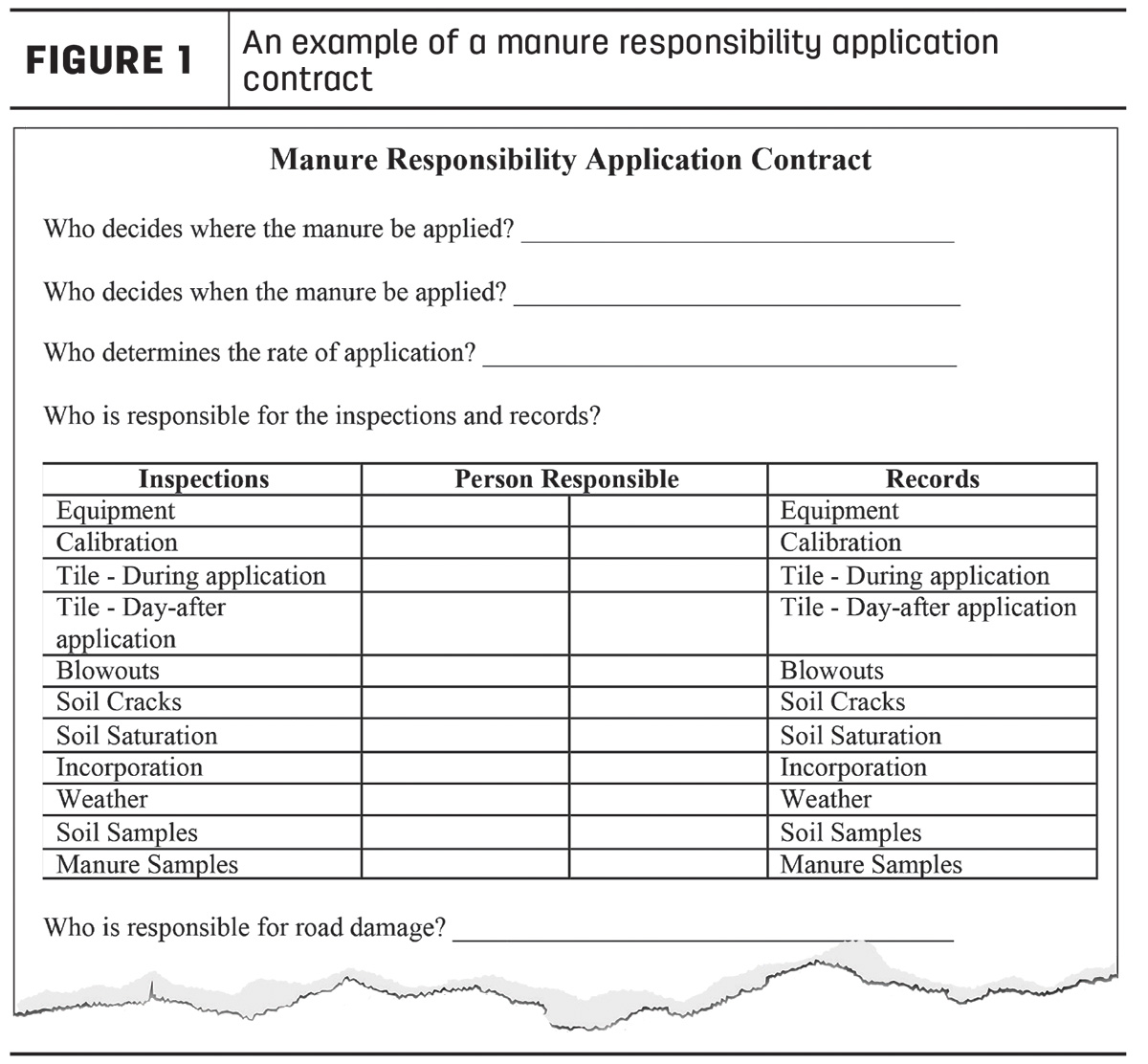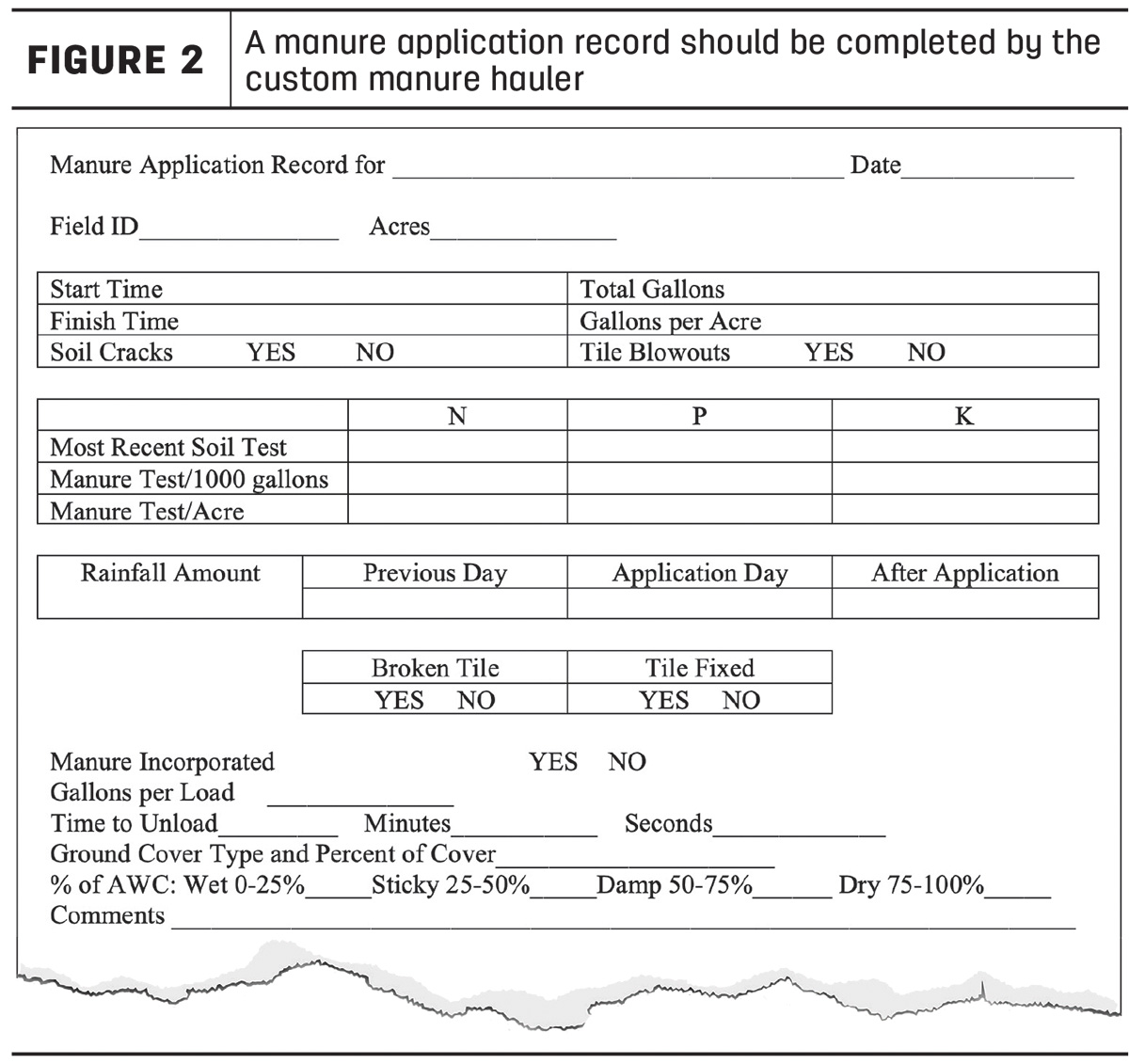In any relationship, communication is key. In the business world, each involved party should understand the other party's perspective to ensure a smooth, uneventful process. In the manure world, there are typically three parties involved: the livestock producer, the crop farmer and the manure hauler.
Think of these parties as a three-legged stool and each leg needs to hold up to its end of the deal so the stool is balanced properly. In this article, I outline the components we have used and refined throughout our 35-plus years of experience in our operation. We have found that by using these standards, we have eliminated most communication issues and can meet and exceed our customers’ expectations.
In the initial conversation, the goals for each party should be clearly laid out, ideally in some sort of contract. The goals laid out need to be reasonable expectations that are black and white, making them more concrete than “I think” or “I assume.” Ideally, a face-to-face meeting and/or phone call during the winter or slow time before manure application season arrives will ensure all parties are aware of the goals for the upcoming season. All three parties should have each other’s contact information so communication can be direct and clear.
Each party has goals based on its purpose. The livestock producer’s goal is to remove manure, the crop farmer’s goal is to receive nutrients and the manure hauler’s goal is to make a decent living while keeping the manure on the field and out of places manure should not be. To accomplish the goals of each party, lay out the objectives in a contract. It may also be helpful to have a responsibility sheet that explains who is responsible for each item (Figure 1).

To best plan for the season, the manure hauler needs to know several things:
-
How many gallons need to be applied for the year?
-
What are the rules and regulations for that size of operation and manure application? Who is the regulatory agency for that particular size of operation? In Ohio, it is either the state Soil and Water Conservation District or the Ohio Department of Agriculture. Are any permits applicable (i.e., National Pollutant Discharge Elimination System) that would require extra precautions, actions or documentation?
-
Timing of application. Is this a once-per-year visit, or does manure need to be applied at every possible opportunity? If applying in the spring, is it before planting, or does corn need to be side-dressed? In the summer, is it after each hay cutting or maybe after wheat? If applying in the late summer and early fall, is it after silage? Will a winter cover crop be planted?
-
What are the phosphorus levels in the soil? The manure hauler should have a copy of the soil test so it can be included in the application report. The manure hauler should also have an idea of basic agronomy and what nutrient levels are needed to achieve the yield goals for that farm.
-
Has a recent manure sample been collected? What are the nutrient levels? I personally do not recommend book values. Book values have been compiled from years of extension research, and they could be a starting point, but each operation is different and there are varying factors. A composite sample needs to be pulled from each farm before manure is removed and applied.
-
What are the yield goals? The manure hauler needs to work with the farmer and/or the agronomist so the soil needs can be met. If not enough manure can be applied to meet nitrogen, phosphorus, potassium and/or micro-nutrient needs, the crop producer needs to know that the manure application must be supplemented with a commercial fertilizer application. Manure is a good base layer but may not always be a complete fertilizer application.
-
Where are fields located? The manure hauler needs to know the location of each field so correct equipment (dry spreaders, liquid spreaders, dragline and/or semis) can be brought and enough employees assigned to get the job completed in a timely manner. “Down the road,” “around the corner” or “just a little ways” are not accurate descriptions; the manure hauler needs specific miles and routes so he or she can plan properly and accordingly. Consider road weight limits and permits required, bridges and one-way traffic patterns (a practice we highly recommend).
-
What are the terms and conditions for payment? Consider these questions: Who is paying the bill? Is the bill split or based on nutrient value or per gallon? What additional costs might be included, such as for additional agitation? Is a fuel surcharge applicable? What are the remedies for a late invoice? (Check state laws for adding interest to invoices after the due date.)
-
Safety should be the number one priority. The manure hauler should have the address for the livestock facility and a list of local emergency service contact numbers. Anyone working around manure needs to be properly informed of dangerous situations that could arise and how to alleviate the situation to prevent a tragic situation.
- Is there an unhappy neighbor? Can the manure hauler use a route that does not go past that house? What are the expectations if the neighbor approaches the manure hauler’s employees or comes into the field? Our policy is to approach the vehicle and engage in conversation, explaining the process and why. Agriculture needs all the positive press it can get, and that happens one conversation at a time.
Across agriculture, we must change the perspective that manure is a waste; it is a valuable product that needs to be handled as such. When handled properly, manure provides nutrients to the crops that feed the livestock that feed us.
There should be an application report done by the manure hauler for every field. This report should include, at minimum, date applied, acres applied, gallons per acre, a manure sample and what the soil phosphorus level was before application (Figure 2).

Following the cover sheet, attach all supporting documentation including the weather the day before application, application day and the day following application. The manure hauler can also add a sheet comparing commercial fertilizer values to the manure nutrient values. This is an easy way to show the crop farmer the exact nutrient value received of nitrogen, phosphorus and potassium. This sheet does not include organic matter or the other benefits manure offers. Most of the time, the value of manure exceeds application costs. This report needs to be shared with the crop farmer and the fertilizer dealer so that manure can be given accurate credit in the crop farmer’s fertilizer program.
Manure management is not a simple process, yet it is not a complicated process either. Communication between involved parties can decrease the complexity so everyone reaps the benefits.






